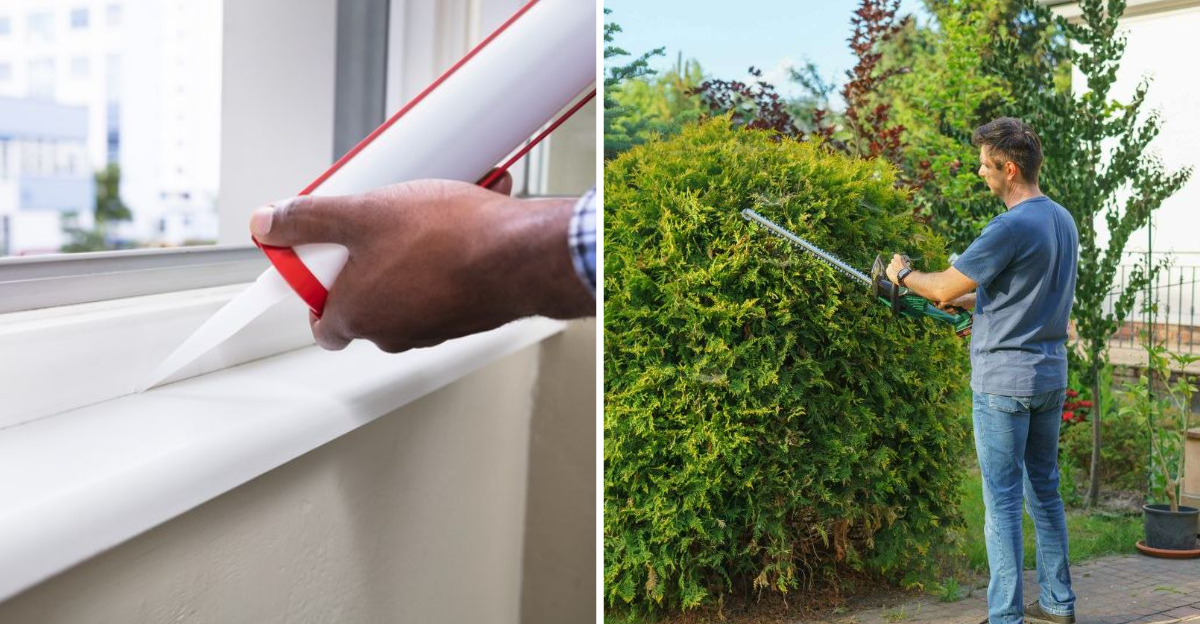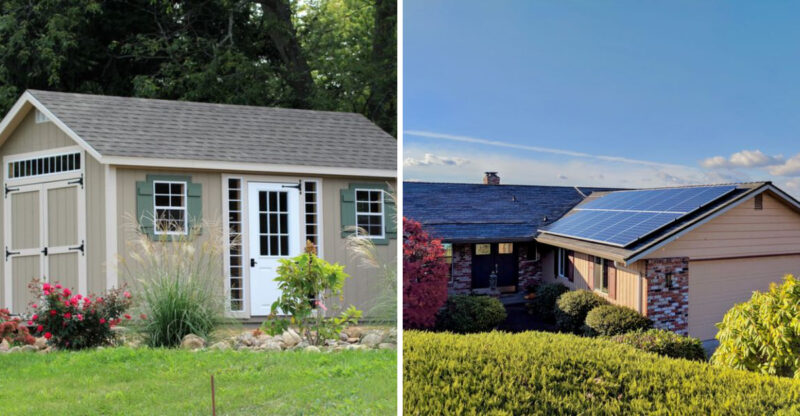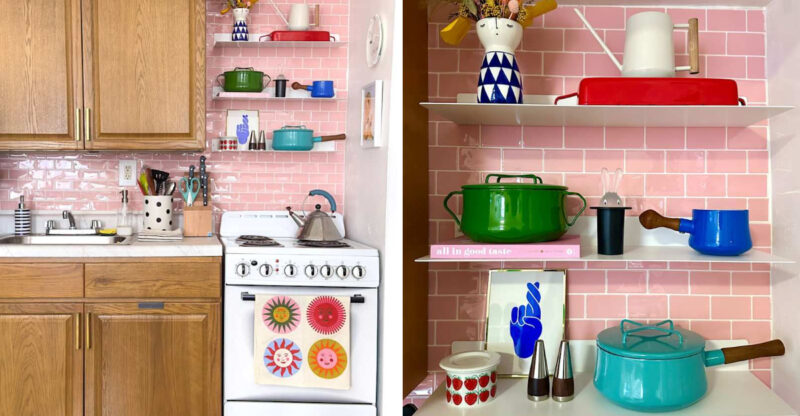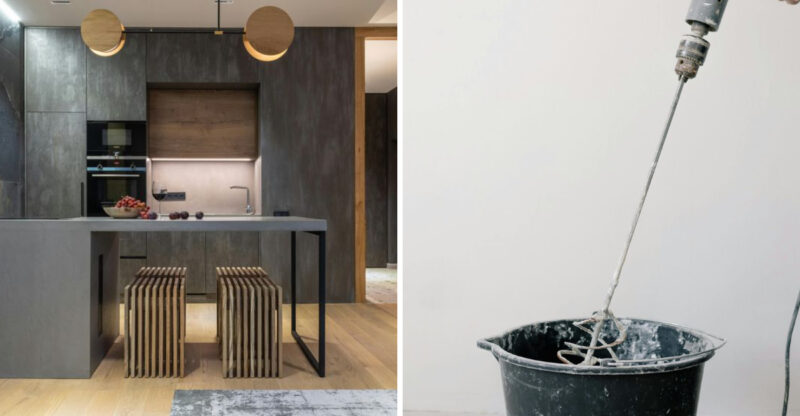7 Yearly Home Maintenance Jobs That Could Make Life Easier

A well-cared-for home feels comfortable, safe, and inviting but that comfort doesn’t happen on its own.
By dedicating a little time each year to essential upkeep, you can avoid costly repairs and unexpected headaches. These fifteen annual maintenance tasks may take some effort upfront, but they pay off with smoother, stress-free living throughout the year.
1. Cleaning Gutters and Downspouts
Fall leaves and spring debris can clog your gutters, causing water to overflow and damage your home’s foundation. I make gutter cleaning a twice-yearly ritual once in late spring and again in late fall to prevent these expensive problems.
A garden hose with a spray nozzle works wonders for flushing out stubborn clumps. While you’re up there, check for loose connections and seal any leaks with silicone caulk.
If climbing ladders isn’t your thing, consider installing gutter guards or hiring a professional. The $100-200 you might spend on cleaning services is nothing compared to the thousands you’d pay for foundation repairs or water damage restoration.
2. Inspecting Roof for Damage
Your roof silently protects everything you own, yet most homeowners rarely check it until water starts dripping inside. I grab binoculars each spring to scan for missing shingles, curling edges, or damaged flashing without climbing up.
Dark spots often indicate moisture problems that need immediate attention. Small issues fixed promptly might cost $200-300, while waiting could lead to complete roof replacement at $5,000-10,000.
After severe storms, a quick inspection can catch wind damage before it worsens. Remember that most roofing materials last 15-30 years, so if yours is approaching that age, schedule professional inspections more frequently. This simple yearly check prevents those middle-of-the-night leaky ceiling emergencies.
3. Servicing HVAC Systems
When was the last time you had your heating and cooling system professionally serviced? HVAC technicians do more than just change filters they clean coils, check refrigerant levels, and calibrate thermostats for optimal performance.
Spring is perfect for AC maintenance, while fall works best for heating system checks. Professional servicing costs around $80-200 but extends system life by years and prevents $500+ emergency repairs during extreme weather.
My HVAC efficiency improved dramatically after regular maintenance began. The system runs quieter, my energy bills dropped about 15%, and I’ve avoided those sweltering summer days waiting for emergency repairs. Most HVAC warranties actually require annual professional servicing to remain valid something many homeowners don’t realize until it’s too late.
4. Checking and Replacing Air Filters
Dirty air filters force your HVAC system to work harder, wasting energy and shortening its lifespan. I mark my calendar to check filters monthly and replace them every 1-3 months depending on household factors like pets, allergies, and air quality.
The difference in airflow between a clean and dirty filter is remarkable. Replacements cost just $10-20 each but can reduce energy consumption by up to 15%. That’s about $180 yearly savings on a $100 monthly energy bill!
When buying filters, look at the MERV rating higher numbers trap more particles but may restrict airflow in some systems. Taking a photo of your filter size with your phone ensures you’ll always have the right information when shopping. This five-minute task delivers better air quality and lower bills all year.
5. Inspecting Plumbing for Leaks
Even tiny plumbing leaks waste gallons of water daily while potentially causing hidden structural damage. Did you know a faucet dripping once per second wastes over 3,000 gallons yearly?
I dedicate one day each spring to inspecting under sinks, around toilets, behind washing machines, and checking faucets for drips. Look for water stains, warped materials, or mildew smells that indicate hidden leaks.
Most fixes require just a wrench and some plumber’s tape, costing under $10. For toilet leaks, add food coloring to the tank if it appears in the bowl without flushing, you need a new flapper valve (about $5). Small leaks caught early prevent water damage repairs that average $2,500. This simple inspection saved me hundreds when I caught a supply line slowly leaking behind my refrigerator.
6. Sealing Windows and Doors
If you’ve ever felt a mysterious draft while sitting in your living room, your home is literally leaking money. Weather stripping around doors and caulking around windows deteriorates over time, creating gaps that let conditioned air escape.
Each fall, I check these seals by holding a lit candle near edges (on a non-windy day) – flickering flames reveal air leaks. Replacing weather stripping and applying fresh caulk costs under $50 but can cut energy bills by 10-15%.
Don’t forget door sweeps at the bottom of exterior doors – they’re often the biggest culprits for drafts. For older windows that can’t be properly sealed, removable window insulation kits provide an inexpensive seasonal solution. This yearly task makes your home noticeably more comfortable while lowering utility bills throughout extreme seasons.
7. Pruning Trees and Shrubs
Overgrown trees and shrubs don’t just look messy they can damage your home, block security lighting, and create safety hazards. Winter is actually ideal for major pruning when plants are dormant and their structure is visible.
I focus on removing branches touching the house (they provide highways for insects), clearing roof overhangs, and trimming shrubs below window height for security. Proper pruning tools cost $50-100 but last many years with care.
Beyond aesthetics, this maintenance prevents expensive problems. A branch that falls during a storm can cause thousands in damage, while overgrown shrubs against foundations trap moisture leading to mold or rot. Well-maintained landscaping also adds 5-12% to property values according to real estate studies. The 2-3 hours spent pruning yearly delivers both immediate visual improvement and long-term protection.






